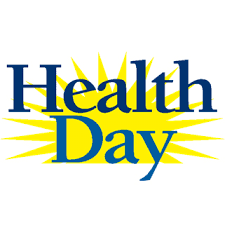Introducing New Leader Toolkit: Your guide to OR leadership success

Editor's Note Stepping into a leadership role in the OR is both exciting and demanding. From budgeting and performance metrics to staffing and scheduling, there is a lot to navigate right from day one. To help new leaders step into their roles with confidence—and to offer fresh insights for seasoned…
Study: BMI, hidden tumors complicate intubation

Editor's Note Subtle risk factors—such as low BMI and hidden tumors—could lead to unexpected airway management difficulties, according to research published on March 17 in Nature: Scientific Reports. The case-control study analyzed 672 surgical patients who required endotracheal intubation between 2015 and 2020. Researchers compared 168 patients who experienced difficult…
Study: Implicit bias linked to low-value vascular procedures, worse outcomes for Black patients

Editor's Note Reducing the negative influence of implicit bias requires system-level interventions to ensure procedures align with best practices for all patients, according to results of new research on outcomes for vascular surgery patients. Published February 26 in JAMA Surgery, the study showed that implicit racial bias among vascular specialists…
Study: Weekend effect raises risk of surgical patient mortality, complications

Editor's Note A March 4 study in JAMA Network Open underscores the persistence of the “weekend effect,” a surgical care phenomenon in which the risk of postoperative complications, readmissions and mortality rises immediately before the weekend. The research suggests variations in staffing, resource availability, and care coordination may contribute to…
Reviewing the evolution of US News’ 2025 best ASCs ranking

A wave of policy and regulatory changes is shaking up the healthcare industry—among many other markets. Like the COVID-19 pandemic greatly sped up the proliferation of ambulatory surgery centers (ASCs) by bringing traditional hospital operations to a standstill, ASCs are again on the poise of another boom. Medical innovation abounds…
Healthgrades names best hospitals for patient outcomes

Editor's Note Healthgrades has announced its 2025 America's Best Hospitals Awards, recognizing the top 50, 100, and 250 hospitals in the U.S. for overall clinical performance. According to a January 28 announcement, the rankings are based on an analysis of approximately 4,500 hospitals, evaluating outcomes for more than 30 common…
Healing healthcare: How clinician incentives can help get from volume to value

Takeaways • Although the central tenets of value-based healthcare have not changed, in many cases implementation has been reduced to little more than reducing costs, to the detriment of clinicians and patients. • The right incentives, such as recognition and work support, can effectively inspire clinicians to deliver high value…
Study: Prehabilitation reduces surgical complications, speeds recovery

Editor's Note Patients who engage in prehabilitation—exercise, diet changes, and social support—before surgery significantly reduce their risk of complications, shorten hospital stays, and improve recovery, according to a new evidence review in The BMJ. As reported January 24 by HealthDay, the analysis of 186 clinical trials involving more than 15,500…
Study: Perioperative pregabalin reduces risk of kidney decline compared to gabapentin
Editor's Note The first study to directly compare kidney-related adverse outcomes between perioperative use of gabapentin and pregabalin shows that the former drug carries a higher risk, Renal and Urology News reported January 21. Published in Frontiers in Medicine, the study involved a trial emulation of 1,280 propensity-matched surgical patients…
Study: Music, preoperative education reduce cardiac surgery anxiety, improve recovery

Editor's Note Research shows combining music with preoperative education not only reduces anxiety, but also enhances recovery outcomes in patients undergoing open cardiac surgery. Published January 21 in the Journal of Perianesthesia Nursing, the randomized controlled study involved 322 patients, evenly randomized into an experimental group (music and preoperative education)…

 Free Daily News
Free Daily News